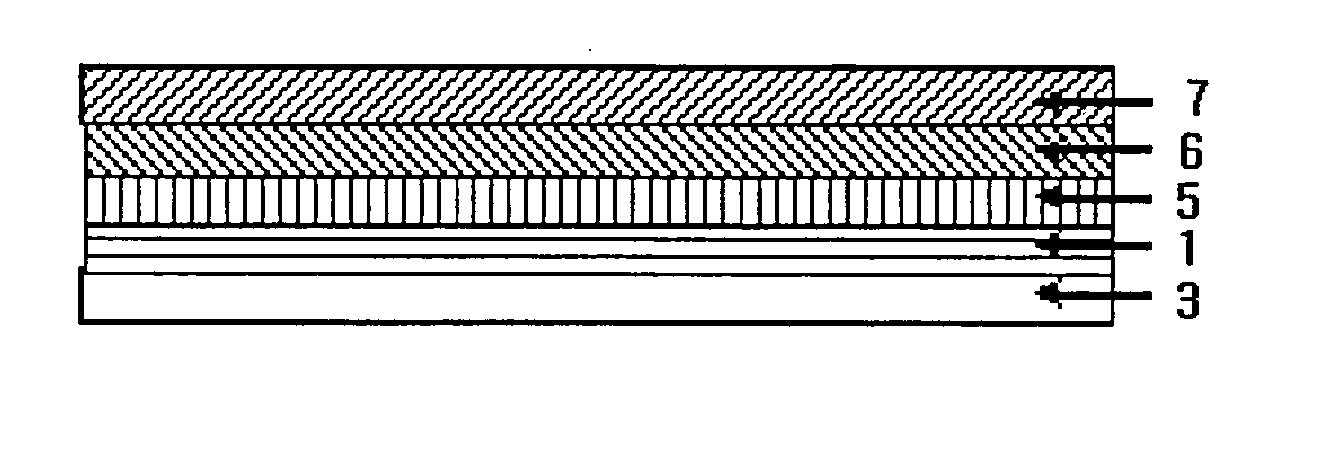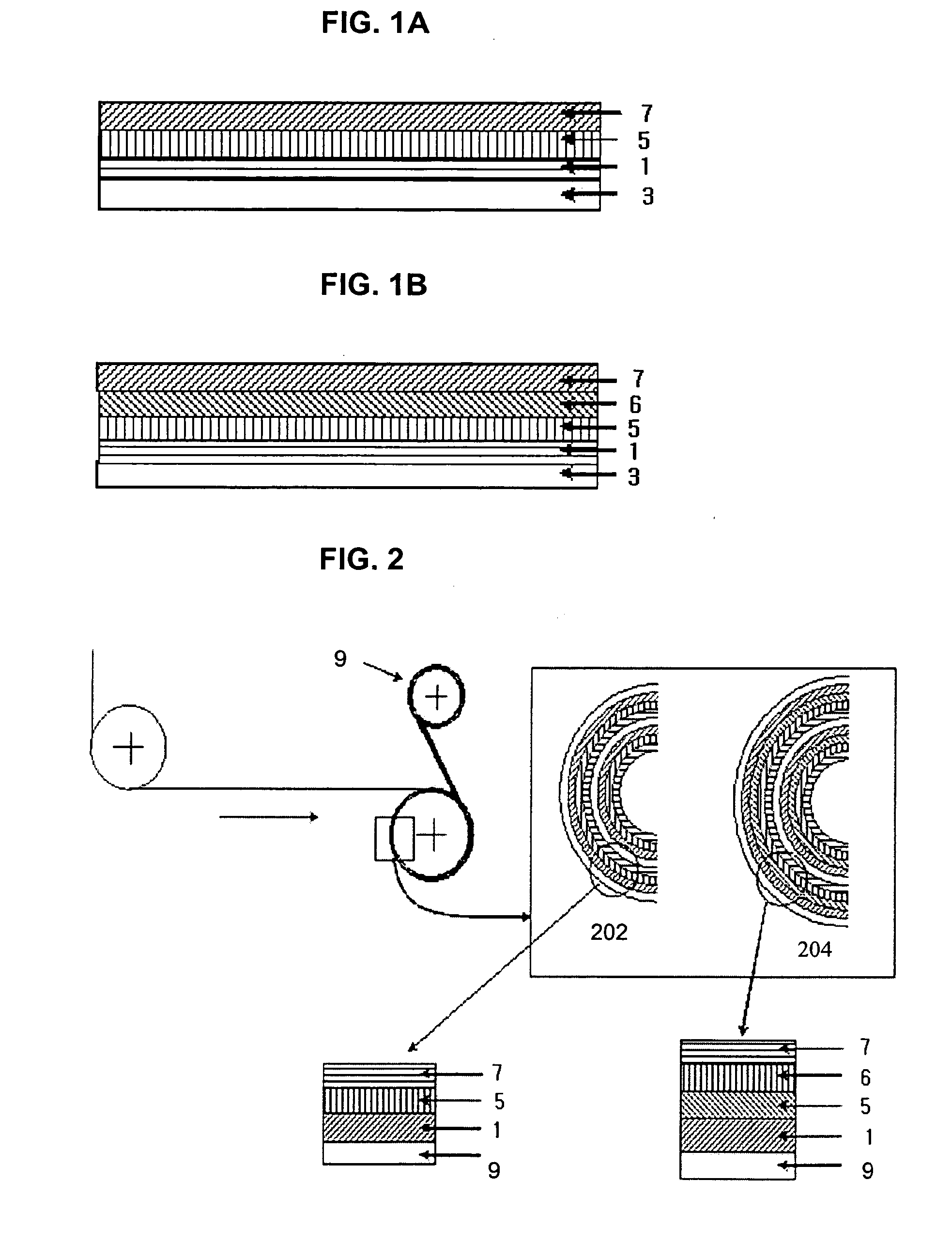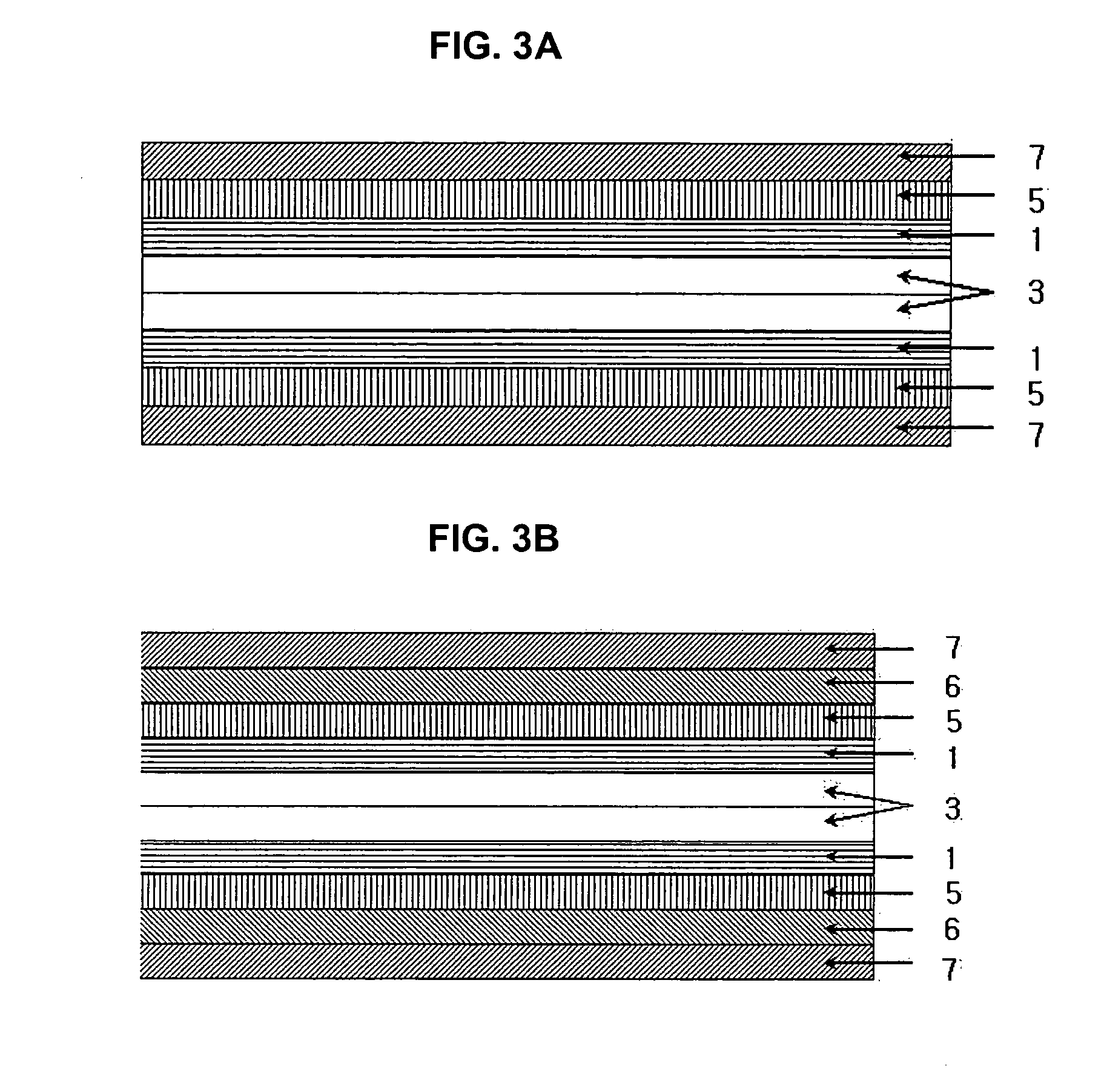Negative electrode for rechargeable lithium battery, method of producing same and rechargeable lithium battery comprising same
a technology of rechargeable lithium batteries and negative electrodes, which is applied in the direction of cell components, final product manufacturing, sustainable manufacturing/processing, etc., can solve the problems of internal short circuits and cycle life characteristics deterioration, and achieve the effect of preventing damag
- Summary
- Abstract
- Description
- Claims
- Application Information
AI Technical Summary
Benefits of technology
Problems solved by technology
Method used
Image
Examples
example 1
As a release agent, a silicon resin composition (included 22.5 wt % of SYL-OFF 7900 (trade-mark DOW CORNING CORPORATION), 2.5 wt % of SYL-OFF 7922 (trade-mark DOW CORNING CORPORATION) and 75 wt % of water) was coated on a polyethylene terephthalate film by a mayer bar coating procedure. The coated polyethylene terephthalate film was dried at a temperature of 180° C. in an oven for 2 minutes to produce a release-treated polyethylene terephthalate film coated with a silicon release layer having a thickness of 0.3 μm.
The release-treated polyethylene terephthalate film was positioned on the protection layer on the copper-deposited glass according to Comparative Example 3 and pressed, followed by stripping. As a result, the protection layer was not separated from the copper-deposited glass, as shown in FIG. 4B.
example 2
Copper was deposited on the side of the release-treated polyethylene terephthalate film opposite the side that was coated with the silicon release layer produced according to Example 1. At this time, the thickness of the copper layer was controlled to 3000 Å. Thereafter, a lithium metal was deposited on the copper layer until its thickness reached 5 μm to produce a four-layered product (release layer / polyethylene terephthalate film / copper layer / lithium metal layer). The polymer solution produced according to Comparative Example 1 was coated on the lithium metal layer and dried at room temperature for 1 hour, followed by re-drying under a vacuum for 1 hour to produce a five-layered product (negative electrode) of release layer / polyethylene terephthalate film / copper layer / lithium metal layer and the protection layer.
The negative electrode was wound using a plastic stick by hand and then unwound. As a result, the coated protection layer was clearly maintained without damage.
example 3
An elemental qualitative analysis using XPS (X-ray Photo-electron Spectroscopy) was performed on the release layer and the protection layer of the negative electrode according to Example 2, after it was cut. This analysis was performed to identify the presence of the release agent on a surface of the polymer layer. The results are shown in Table 1. It is evident from Table 1 that silicon, which was the main component of the release agent, was not present on the surface of the polymer layer. The results indicate the absence of the releasing agent on a surface of the polymer layer.
TABLE 1Elemental qualitative analysis (% atomic concentration)C1sF1sN1sO1sP2pS2pSi2pReleasing treated part46.627.326.1Polymer layer50.210.51.334.20.52.70.2Polymer layer (after71.17.61.216.30.03.80.0argon etch)
PUM
 Login to View More
Login to View More Abstract
Description
Claims
Application Information
 Login to View More
Login to View More - Generate Ideas
- Intellectual Property
- Life Sciences
- Materials
- Tech Scout
- Unparalleled Data Quality
- Higher Quality Content
- 60% Fewer Hallucinations
Browse by: Latest US Patents, China's latest patents, Technical Efficacy Thesaurus, Application Domain, Technology Topic, Popular Technical Reports.
© 2025 PatSnap. All rights reserved.Legal|Privacy policy|Modern Slavery Act Transparency Statement|Sitemap|About US| Contact US: help@patsnap.com



